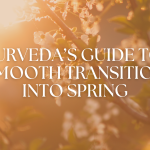By: Dr. Anup Mulakaluri, ND, AWC
Introduction:
In my experience, diabetes offers a great opportunity for a complete reversal of the disease, if it is caught early enough. Even in late disease, many can reduce their dependence on insulin by activating the right physiological pathways…
The way in which body lowers blood sugar is with the help of a hormone called insulin… Hormones, as I like to say, help to harmonize the body’s function. The disease of diabetes is initiated when the body loses sensitivity to insulin or loses ability to produce insulin.
Insulin helps the sugar to be picked-up by the cells of the body and used for energy. The biggest consumers of sugar are the skeletal muscles, esp. quads & hamstring, arm muscles, abdominal and back muscles, which are the biggest skeletal muscles in our body. Insulin also helps the liver to package extra sugar into glycogen for storage… As you see, without insulin we can neither use the sugar for energy, nor store the sugar. So, sugar stays in our blood, resulting in high blood sugar.
Treatment strategies:
Ayurveda approaches treatment by helping to maximize the natural healing capacity of the body… This involves innate understanding of the daily rhythms and physiological function of the body that need to be corrected. Physiological function is enhanced to achieve the health goals through diet, lifestyle, herbal, or spiritual methods. In the part 1, we discussed 5 principles of treatment that help restore healthy physiology:
1. Reduce simple sugar and carbohydrate intake in diet: Ayurveda recommends constitutional based individualized diet. The specifics of this diet may change from person-to-person, but here I will share some general ideas.
a. Reduce carbohydrate intake: simplest thing is to reduce the intake of rice, certain grains like wheat, barley; foods like sugary snacks, breads, pasta, desserts, etc. Replace these with extra servings of vegetables, fruits, beans/lentils, nuts/seeds, and oils… Alternative grains that have low impact on blood sugar include: amaranth, quinoa, millet, and buckwheat. These grains provide high protein or high fiber to reduce impact the carbohydrate.
b. Extra raw oils – putting raw oil on your food is a fairly unique Ayurvedic recommendation… Oils help to balance blood sugar in a few ways:
i. 6-9 times more calorie efficient than sugar;
ii. Oils don’t become sugar when they make energy;
iii. Oils have smoother more stable structure, so prevent damage to blood vessels that may be caused by sugar crystals in the blood stream;
iv. Fatty acids are also the main components of the all the structural membrane in the body – this makes it very useful regenerative support for the body;
v. Because of the caloric efficiency, oil is also more filling; it can replace some of our carbohydrate intake and also reduce cravings in between meals.
c. Antioxidant – this directly has reversal effect on the formation of oxidized sugar (Advanced glycation end-products) in the body… Antioxidants are rich in certain roots veggies like beets, carrots, celery; also squashes like delicata, butternut, acorn, etc. mustard family veggies like broccoli, cauliflower, cabbage, Brussel sprouts… Fruits like berries (blueberries, cherries, raspberries, etc.) – each group offers different spectrum of antioxidant.
2. Improve insulin production from the pancreas: This activity can be improved in specific ways:
a. Stimulating physiological production of Insulin can be promoted with eating a small sweet at the beginning of a meal… This sounds counter-intuitive, but a one-inch cube of banana or a small sweet fruit like a pear, peach, apricot, etc. stimulates the sweet taste buds and activates the nervous system to activate production of insulin.
i. As managing blood sugar is the concern, it is essential that intake of sweets in general must be minimized by diabetics.
b. Slow down, sit down, calm down, and eat your food… As much as hunger is a function of daily cycle of hormones… it is equally stimulated with the involvement of other senses like smell, touch, sight… Taking time to sit down and enjoying your food help the autonomic nervous system to shift from “fight-flight” into a “rest-digest” mode to promote optimal digestive function.
c. Herbal medicine to stimulate the pancreas: Gymnema sylvestre (also called Gurmar): helps to regenerate β-cells in the pancreas, which secrete insulin into the body.1 Increased insulin contributes to blood sugar control from using Gurmar. Among insulin dependent patients, Gymnema has been shown to reduce insulin requirement while reducing overall blood sugar, compared to insulin-dependent controls.2
3. Improve insulin-sensitivity in muscles and other tissues.
a. Insulin sensitivity can be improved by stimulating the large muscles in our body to use energy… This can be done by a good mix of cardiovascular aerobic exercise and strength training… Weight lifting or other forms of resistance training (like calisthenics) helps grow the size of the muscle that can consume or store the sugar…3 Cardiovascular aerobic exercise stimulates the swift and efficient use of this sugar in the body…3
b. Aerobic Exercise, which causes increased breathing and improves intake of oxygen. Oxygen has a thermogenic effect that stimulates conversion of sugar into energy.
4. Promote overall metabolic activity of the body to consume or store sugar safely.
a. To stay with rhythms of the body, one can do at least a short exercise routine to stimulate the big muscles of the body in the morning… Exercising in the morning takes advantage of thyroid hormone that is surging in the morning. Thyroid hormone is the master metabolizer of the body – promotes functions of energy production in every cell. Stimulation in this way carries the effect of elevated metabolism throughout the day.
b. A stimulating breathing exercise called Kapalbhati can be used to stimulate appetite and advance the blood sugar management system. This exercise must be learned with aid of a practitioner to understand the mechanics and perform it correctly. In brief, it is like doing fast diaphragmatic breathing – at a rate as high as 120breaths/min. **Doing a correct diaphragmatic breath ensures that practitioner does not become hypo-ventilated or faints** Also, I like to practice caution with this exercise, if individual is prone to anxiety and has tendency to hyperventilate… Link with my Naturopathic mentor, Dr. Virender Sodhi: https://www.youtube.com/watch?v=J0Mg6WZ2UTw
5. Balance blood sugar through adjustment of daily routines and meal schedules.
a. Eating equal ratio of protein-to-carbohydrate can help to blunt the surge of blood glucose after every meal because protein breaks down slower than carbs.10
i. For example, with one ounce of protein (light meat or beans), combine one ounce of vegetables (a healthy source of carbs.)
ii. Another way to reduce carbs is to replace grains white rice, wheat, barley with high protein grains quinoa, millet, amaranth, or buckwheat.
b. Eat small and regular meals: having 4-5 small meals spread throughout the day can be helpful to minimize glucose load with each meal and controlling blood sugar spikes.
i. Add in 2 snack meals between breakfast—lunch—dinner. One snack may be a 1-2 servings of fruits. The second snack can be protein-rich, like 1-2 handfuls of raw tree nuts, 1-2 tablespoons of hummus or 1 tablespoon of deli meat or cheese.
c. Eat a variety of snack foods in between smaller meals:
i. Handful of Tree nuts: almond, cashews, walnuts, pistachio, pecans, brazil nuts, etc.
ii. Handful of Seeds: flax seeds, sunflowers seeds, hemp seeds, pumpkin seeds, etc.
iii. Carrots, celery, cucumber, etc. with side of hummus or another bean dip.
iv. 1-2 servings of seasonal fruits, etc.
Herbal medicines:
Azadiratcha indica, Neem: Anti-diabetic effects of this versatile herb have proven in animal and human studies alike. Neem is a bitter herb that has the capacity to stimulate the pancreas, improving its digestive and insulin-producing activity. Neem has proven effective in individual with insulin-dependent diabetes to reduce dosage by 30-50%.4 This herb is also quite safe and effect when combined with oral hypoglycemic drugs.5 Therefore, it is useful to provide more effective glucose control without need to add on drugs.
Ocimum sanctum, Holy basil: This plant is central to many ceremonial and religious activities in Indian culture. In additional to the Spiritual significance, the value of holy basil comes from its versatile medicinal activities. For the diabetic patient, holy basil has been shown to contribute toward blood glucose control. It also has an anti-oxidant effect that protects all organs of the body from gluco-toxic oxidative damage. Holy basil helps to replenish anti-oxidant enzyme in the body, while putting a cap on inflammation.6,7 In this way, holy basil helps in preventing complications related to diabetes.
Mormordica charantia, Bitter melon: research has shown this herb to be effective for promoting insulin release, as well as insulin sensitivity. Thus, it is helpful in both type 1 and type 2 diabetes patients. Bitter melon carries insulin-like peptides that mimic the activity of physiological insulin to promote additional blood sugar control.8 Bitter melon was also found to be as much or more effective than oral anti-diabetic drug Rosiglitazone (Avandia), while having none of the side effects.9
References:
1. K. Shimizu, M. Ozeki, et al. “Suppression of glucose absorption by extracts from the leaves of Gymnema inodorum, Jpn J Pharmacol. 2001 Jun; Vol. 86(2), Pg. 223-9.
2. Shanmugasundaram ER, et al. Use of Gymnema sylvestre leaf extract in the control of blood glucose in insulin-dependent diabetes mellitus. J Ethnopharmacol. 1990 Oct; 30(3): 281-94.
3. Chibalin AV, et al. Exercise-induced changes in expression and activity of proteins involved in insulin signal transduction in skeletal muscle: Differential effects on insulin-receptor substrates 1 and 2. PNAS, Jan. 2000; Vol. 97(1), Pg. 38-43.
4. R. Shukla S. Singh, and C. R. Bhandari, “Preliminary clinical trials on antidiabetic actions of Azadirachta indica,” Medicine, Surgery, 1973; 13:11–12.
5. A. Waheed, G. A. Miana, and S. I. Ahmad, “Clinical investigation of hypoglycemic effect of seeds of Azadirachta indica in type-2 (NIDDM) diabetes mellitus,” Pak J Pharm Sci., Oct. 2006, 19(4):322–325.
6. S.K. Bhattacharya, et al., “Effect of Ocimum sanctum, ascorbic acid, and verapamil on macrophage function and oxidative stress in mice exposed to cocaine,” Indian J Pharmacol., June 2009, 41(3):134–139.
7. S. Singh and D.K. Majumdar, “Evaluation of anti-inflammatory activity of fatty acids of Ocimum sanctum fixed oil,” Indian Journal of Experimental Biology, 1997, Vol. 35(4):380.
8. V.S Baldwa, et al., “Clinical trial in patients with diabetes mellitus of an insulin like compound obtained from plant source,” Upsala Journal of Medical Science, 1977, 82:39–41.
9. Inayat-ur-Rahman, et al., “Serum sialic acid changes in non-insulin-dependant diabetes mellitus (NIDDM) patients following bitter melon (Momordica charantia) and rosiglitazone (Avandia) treatment,” Phytomedicine, May 2009,16(5):401–405.
10. Gannon MC and Nuttall FQ. Effect of a High-Protein, Low-Carbohydrate Diet on Blood Glucose Control in People With Type 2 Diabetes. Diabetes, Sept. 2004 vol. 53 no. 9, 2375-2382.



